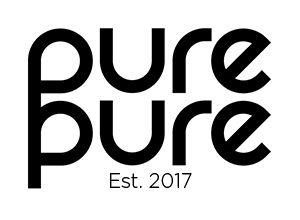
The Story of CBD
From what we know from doing research and all that, CBD has been part of our society for many years. And its popularity has been rising lately because of its health benefits and other things that people enjoy.
Furthermore, it has been used as a valuable medicinal aid throughout history; however, due to a lack of scientific evidence, most doctors were not accepted during the advent of modern medicine. Let’s discover the story behind CBD’s history from the early stages until today.
Early Discovery of CBD
In 2737 BC, Chinese Emperor Sheng Nung used a cannabis-infused tea to treat several illnesses, including memory loss, malaria, rheumatism, and gout. Researchers didn’t start thinking about cannabis’s medicinal uses until 1839 when Irish physician and medical researcher William B. O’Shaughnessy published a thesis looking into the plant’s therapeutic effects.
Advances in science and technology confirmed the existence of compounds within the cannabis plant nearly a century after O’Shaughnessy published his thesis. When British chemist Robert S. Cahn revealed the partial structure of Cannabinol (CBN), which he later described as wholly developed in 1940, it was the first observation of an individual cannabinoid.
Furthermore, Roger Adams, an American chemist, made history two years later when he successfully extracted the first cannabinoid, Cannabidiol (CBD). Tetrahydrocannabinol was discovered as a result of his experiments (THC).
Early Studies of CBD
During the early stages of cannabis researches, scientists had only a rudimentary understanding of cannabinoid structure and a hazy understanding of the plant’s biological composition. As a result, early researchers were unable to pinpoint which compound was causing which impact.
The stereochemistry of THC was discovered a year later, revealing the cannabinoids’ direct connection to the euphoric effects associated with marijuana use and disassociating CBD as a mind-altering compound.
When science progressed, New Mexico passed the Controlled Substances Therapeutic Research Act in 1978, which recognized the medicinal value of cannabis for the first time. During the 1980s, Dr. Mechoulam and his team performed a report on the possible use of CBD as a hypnotic for the treatment of epilepsy.
Present Use of CBD
Even though CBD supplements made from industrial hemp are legal in all 50 states, CBD has faced several legal challenges. Truckers carrying hemp or CBD vendors do, on occasion, get into trouble with the law.
As the stigma fades and local legislation and regulations catch up, it is expected that those types of scenarios will change. CBD is also legal as a substitute in the United Kingdom and several other nations.
Furthermore, people use CBD oil and various CBD topicals to relieve pain, inflammation, depression, anxiety, stress, and other illnesses. Also, many athletes are turning to CBD to help them recover from workouts and performances.
Many others, including those suffering from chronic pain, find relief from CBD, helping them reduce their painkillers’ use. Other health benefits and different CBD products have been discovered and introduced to the public over time to top it all. The following are some of the different types of CBD products available in the market.
Edibles
From the word itself, edibles are products that are fit to be consumed. CBD edibles are made up of the same extracts but in the form of food. It is available in a variety of beverages and foods, including teas and chocolate. The most popular type of CBD edible is gummies, and it is available in various flavors with its specific strengths.
Creams
Taking care of one’s appearance or skin is now a must, not that it is not before, but there’s a massive gap between how people take care of themselves before compared to now. By that, manufacturers of CBD products used that chance to make products that fit the needs of society.
Furthermore, CBD is available in topical oils, creams, and lotions. Some people may experience effects right away, while others may not find anything for many hours. It’s probably best to try a few different brands to see which one offers the most relief.
Tinctures
Any medication kept in an alcohol setting is referred to as a tincture. CBD tinctures are not the same as CBD oil, even though both are produced from hemp. Also, when compared to CBD oil, CBD tinctures have a higher bioavailability.
Furthermore, it acts as a preservative, extending the shelf life of CBD. Water-soluble CBD tinctures can also be used in cooking, and it allows for a higher rate of absorption.
CBD Oil
CBD oil is extracted from the seeds, flowers, and stalks of the hemp plant using an extraction process. CBD oil is the most potent and costly of all CBD types. Aside from cannabinoids, fatty acids, protein, essential vitamins, and minerals can all be found in hemp. People are now infusing CBD into food and drink recipes for more normal consumption.
Vaporizer
The CBD vaporizer is designed to be easy to use, discreet, and efficient without increasing the impact on the environment. Vaporizers can deliver CBD extracts quickly by inhalation. Vaping, on the other hand, carries a higher risk of lung injury. Sublingual extracts under the tongue can provide some of the same fast action as vaporizers without the risk of lung injury from vaping.
Future of CBD
Nobody can say for sure what the future holds, but we can still be optimistic about it. Although public understanding of CBD has improved significantly over time, it is still not widely accepted worldwide. Many people are still opposed to CBD and other cannabis-produced compounds, and even more, they are unaware of their benefits.
Furthermore, there is much more work to be done for CBD to achieve its full potential and improve the lives of as many people as possible. The future holds many surprises; thus massive, discovering more health benefits from CBD is helpful to the community.
Takeaway
The discovery of CBD and its products comes a long way, and all of it has been very useful today. Although CBD is a safe alternative to medication, it is always essential for people to always use precaution and never use it instead of their regular prescription unless a doctor or healthcare professional tells them to.





